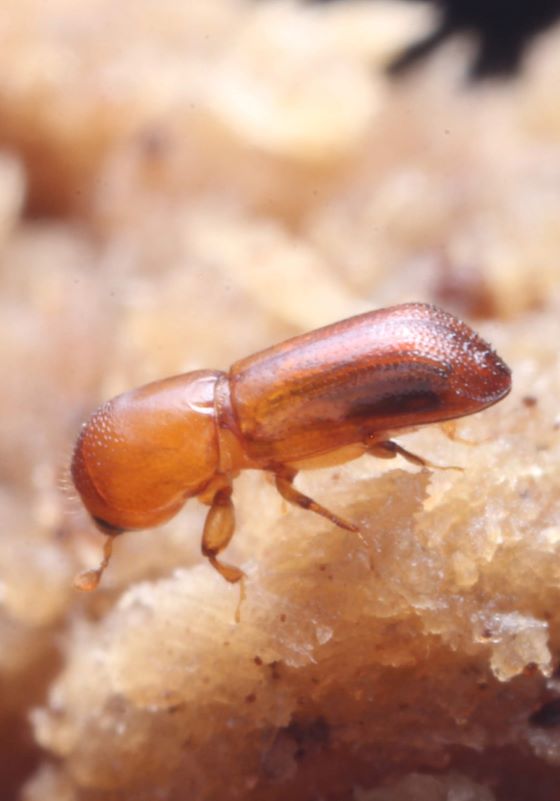There are many types of ambrosia beetles. Typically, these beetles attack weakened, stressed trees, some will even impact freshly- cut timber. They are known for boring holes into the sapwood, or the outer rings of a tree, laying eggs, and planting a compatible fungal species for their larvae to feed on when they emerge.
Redbay Ambrosia Beetles, Xyleborus glabratus, have adapted to specifically target trees within the Lauraceae family and are specialists in transporting laurel wilt fungus, Raffaelea lauricola. A deadly disease for laurel trees.
Trees that are susceptible and at risk include red bay, sassafrass, and avocado plants. Redbay ambrosia beetles are native to India, Japan, Myanmar, and Taiwan, and were first detected in the U.S. in 2005.

Identification
Redbay Ambrosia Beetles are extremely small and difficult to differentiate from other ambrosia species without a microscope. They have a long, cylindrical body ranging from dark brown to almond color.
Thorough observation of a tree may reveal the bugs, but you may notice traces of their activity before actually seeing any beetles. Small pin-point sized holes can be seen on the tree trunk or compacted sawdust tubes.
Management
There are no proven treatments for managing red bay ambrosia beetles. Maintaining tree health may reduce infestation, but prevention of infested and infected wood is the primary strategy to reduce the spread of red bay ambrosia beetles and laurel wilt.
Application of chemicals such as verbenone and methyl salicylate have been shown to effectively repel redbay ambrosia beetles (Hughes, Martini, et al., 2017) and could potentially be used as part of push-pull strategies, those where an attractant and a repellent are used simultaneously (Martini et al., 2020; Rivera et al., 2020).
Public awareness and participation could help to limit the spread of the insect/fungus complex. Buying firewood locally where you plan to burn it, as well as avoiding transport of firewood to campgrounds or parks, is key.
